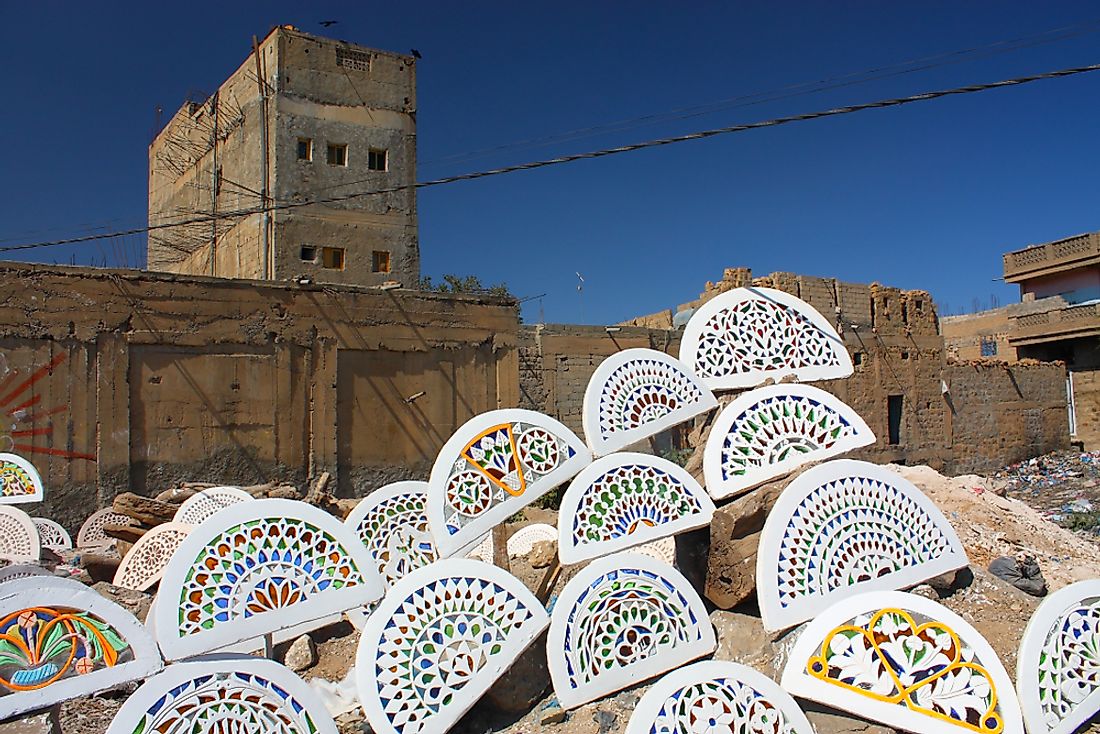What Are The Biggest Industries In Yemen?

Yemen is the poorest country in the Middle East and North Africa (MENA) region with a GDP of about $27 billion. The country has endured five years of intense conflict that has resulted in the worst humanitarian crisis in the modern world. The recurrent fighting and political instability have devastated the economy with the massive bombings destroying critical infrastructure. Famine has worsened the situation as 80% of the 24 million people in the country glaring at starvation and requiring acute assistance. Nearly 3.2 million people are suffering from malnutrition of whom two million are children below five years.
Yemen is concurrently grappling with severe outbreaks of epidemics such as dengue fever, measles, diphtheria, and cholera. About 17.8 million people have no access to sanitation and clean water while 19.7 million are unable to access effective healthcare. Recurrent waves of currency depreciation in 2017 and 2018 resulted in inflationary pressures that exuberates the human crisis. The private sector has suffered the most from the disruption of the financial services and public infrastructure that has left more than two-thirds of the population unemployed and unable to fund everyday living. Even before the conflict, Yemen suffered from years of corruption, mismanagement, and the depletion of natural resources including water and oil that resulted in poverty, underdevelopment, and limited access to essential services as healthcare, electricity, education, employment, and food.
The Biggest Industries In Yemen
Yemen depends heavily on its oil and gas reserves but is not a member of OPEC because it is a small producer. The country has no domestic companies to prospect, mine or refine oil but depends on foreign organizations. Oil products account for 90% of the country's exports and between 70% and 75% of the government’s revenue. The state's 4 billion barrels of oil reserve is expected to last for about nine years. The World Bank anticipates that the plummeting reserves will result in an economic shock wave that will escalate the crisis and expand the zone of lawlessness as far as Saudi Arabia and across the ocean into Somalia, northeastern Kenya, and Ethiopia.
Agriculture
Prior to the war, the country’s difficult terrain, low water supply, limited soil, and the arid and semi-arid environment fostered sophisticated agricultural techniques including seed adaptation and water conservation, making it possible to cultivate crops in adverse climatic conditions. Vast fields of wheat, sorghum, barley, corn, and dairy farms provided enough food to feed the population. Fruits that thrived in the country included bananas, melons, mangoes, citrus, papayas, grapes, apples, pears, and peaches. However, the current situation in the country is very different with more than 80% of the population facing starvation. The ongoing war has displaced millions of farmers and at the same time destroyed vital infrastructure required for farming. Yemen is currently unable to produce sufficient food to feed its population and depends heavily on international aid from the World Food Organization and non-governmental organizations. Empty food reserves, drought, diseases, conflicts, inflation, unemployment, and hopelessness, have led to a famine not experienced anywhere else in the world.
Manufacturing And Industry
Industry and manufacturing accounted for 47% of the GDP before the war while construction, service, and commerce accounted for 25% of employment. Food and beverage processing and packaging alongside the production of cooking oil and flour employed thousands of people and contributed significantly towards the economy. However, most of the thriving industries have collapsed due to the war and displacement of employees while multinationals have left the country. Thousands of jobs were lost resulting in severe unemployment. The country's inability to produce enough electricity has also limited the growth of industries as the cost of power remains exorbitantly high.
Services And Tourism
The service and tourism sectors have also been affected severely by the ongoing conflict as tourists avoid the state due to security concerns. Ancient heritage sites including museums and archaeological villages have been destroyed in the mass bombings while artifacts and other valuables have been lost. Animals that attracted tourists have been poached for body parts or food. The country's restaurants and hotels fall far below the international standards while road and air transport are no longer safe modes of travel. The financial sector is underdeveloped with insurance and banking systems in near collapse. Most of the multinational banks that existed in the country have left due to the conflict and lack of investment.











